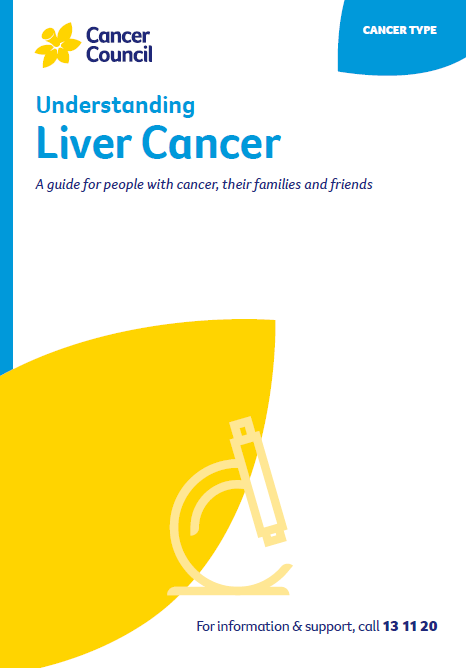- Home
- Secondary liver cancer
- About secondary liver cancer
About secondary liver cancer
Cancer in the liver can be either a primary or secondary cancer. The two types of cancer are different. This section focuses on secondary liver cancer.
Learn more about:
- What is primary liver cancer?
- What is secondary liver cancer?
- Which cancers spread to the liver?
- The liver
- Video: The difference between primary and secondary liver cancer
What is primary liver cancer?
Cancer that starts in the liver is called primary liver cancer. The most common type is hepatocellular carcinoma (HCC).
What is secondary liver cancer?
Cancer cells from a primary cancer in another part of the body can spread through the bloodstream or lymph vessels to the liver. This is called secondary liver cancer, and it is much more common than primary liver cancer in Australia.
Secondary cancers keep the name of the original cancer (for example, secondary liver cancer that started in the lung is called metastatic lung cancer). Because the cancer has spread, it is considered advanced cancer.
Which cancers spread to the liver?
Bowel cancer is the most common cancer that spreads to the liver. This is because the blood supply from the bowel is connected to the liver through a major vein called the portal vein. Other cancers that can spread to the liver include: breast, kidney, lung, melanoma, oesophageal, ovarian, pancreatic, prostate and stomach.
Sometimes, it’s not possible to find where the cancer started; this is called cancer of unknown primary (CUP).
If you have secondary liver cancer, you may find it useful to read about the primary cancer type or CUP.
The liver
The largest organ inside the body, the liver is about the size of a football. It is part of the digestive system, working with the gall bladder and pancreas to help break down food and turn it into energy.
What does the liver do?
The liver has many important jobs, including:
- storing sugars and fats, so they can be used for energy
- producing bile which helps dissolve fat so it can be easily digested
- making proteins to help blood clot and to balance fluid in the body
- breaking down harmful substances, such as drugs and alcohol.
How the liver works
The liver is found on the right side of the abdomen (belly) sitting just above the stomach and under the rib cage (see diagram below). The two main sections of the liver are the right and left lobes.
Blood flows into the liver from the hepatic artery and the portal vein. Blood in the hepatic artery comes from the heart and carries oxygen. Blood in the portal vein comes from the digestive organs and carries nutrients and substances (e.g. medicines) to the liver.
Unlike other internal organs, a healthy liver may be able to repair itself if it is injured or part of it is surgically removed during cancer treatment.
The digestive system

→ READ MORE: Secondary liver cancer symptoms
Video: Secondary liver cancer
In this video, Liver Specialist Dr Jacob George explains the difference between primary and secondary liver cancer.
More resources
Prof Desmond Yip, Senior Staff Specialist, Department of Medical Oncology, The Canberra Hospital, ACT (clinical update); A/Prof Siddhartha Baxi, Radiation Oncologist and Medical Director, GenesisCare, Gold Coast, QLD; Prof Katherine Clark, Clinical Director of Palliative Care, NSLHD Supportive and Palliative Care Network, Northern Sydney Cancer Centre, Royal North Shore Hospital, NSW; Anne Dowling, Hepatoma Clinical Nurse Consultant and Liver Transplant Coordinator, Austin Health, VIC; A/Prof Koroush Haghighi, Liver, Pancreas and Upper Gastrointestinal Surgeon, Prince of Wales and St Vincent’s Hospitals, NSW; Karen Hall, 13 11 20 Consultant, Cancer Council SA; Dr Brett Knowles, Hepato-Pancreato-Biliary and General Surgeon, Royal Melbourne Hospital, Peter MacCallum Cancer Centre and St Vincent’s Hospital, VIC; Lina Sharma, Consumer; A/Prof Simone Strasser, Head of Department and Hepatologist, AW Morrow Gastroenterology and Liver Centre, Royal Prince Alfred Hospital and The University of Sydney, NSW; David Thomas, Consumer.
View the Cancer Council NSW editorial policy.
View all publications or call 13 11 20 for free printed copies.

